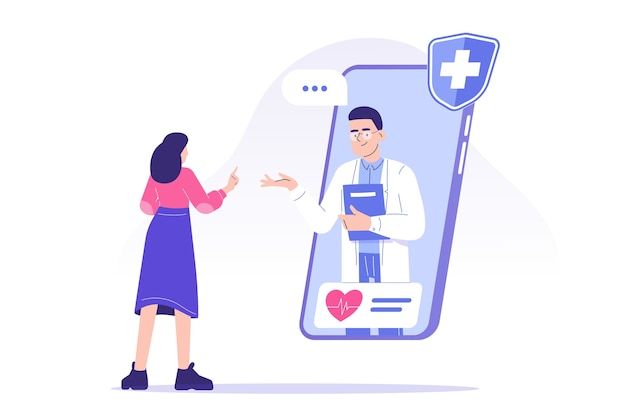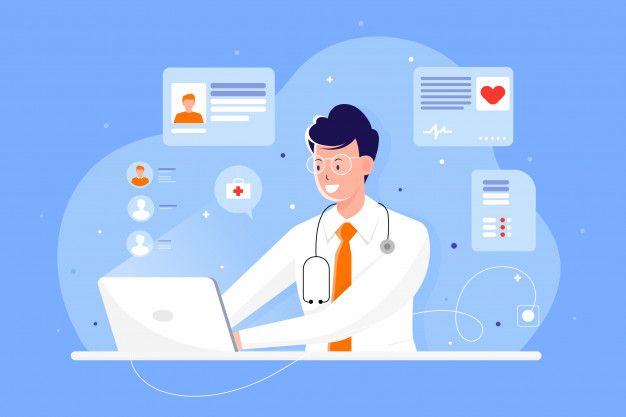The journey of Electronic Medical Records (EMR) is a fascinating tale of technological evolution, marked by milestones that have revolutionized healthcare documentation. From the initial scribbles on papyrus to the click-and-save ease of digital platforms like Super Dr, EMR has come a long way. Let's embark on this narrative, weaving through history, humor, and the high-tech horizons of healthcare.

The inception of EMR can be traced back to the era when "cutting-edge technology" meant a sharper chisel for your tablet – not the electronic kind, but the stone variety. Fast forward to the late 20th century, when the digital revolution began to transform how healthcare providers managed patient information, marking the dawn of the EMR era.

As computers found their way into hospitals, the early adopters of EMR systems were like the cool kids on the tech block, showcasing how digitization could streamline patient data management. This period marked a significant shift from bulky file cabinets to sleek digital databases, making patient records accessible with just a click.

The early adopters of EMR were primarily large hospitals and academic medical centers with the resources to invest in nascent computer technologies. These institutions became the testing grounds for EMR systems, proving their potential to transform healthcare documentation.

The digital transformation of EMR was not just about swapping paper for pixels; it was about enhancing the quality of care, improving diagnostic accuracy, and ensuring seamless communication within the healthcare ecosystem. Imagine a world where medical histories are no longer lost to coffee spills or misfiling – that's the magic of digital EMR.

The shift towards EMR was driven by the need for more efficient, accurate, and accessible patient records. Traditional paper records were cumbersome, prone to damage, and challenging to share among healthcare providers, leading to inefficiencies and increased risk of errors.

EMRs brought about a paradigm shift in healthcare, enhancing the quality of patient care through better data management, reduced errors, and improved clinical decision-making. They also facilitated easier access to patient history, enabling more personalized and timely medical interventions.

The adoption of EMR spread globally over the decades, with developed countries leading the charge. Government initiatives, technological advancements, and the growing demand for better healthcare delivery propelled the widespread adoption of EMR systems.

Let's pause the serious talk for a moment. Imagine an EMR system that auto-corrects your typos, turning "patient has a rash" into "patient has a crush." Or a system so intuitive, it starts scheduling appointments based on your coffee consumption patterns. Super Dr hasn't reached that level of AI sophistication yet, but who knows what the future holds?.

India embraced EMR later than many Western countries, primarily due to infrastructural challenges and the initial high cost of digital systems. However, the past decade has seen a rapid acceleration in EMR adoption across Indian healthcare institutions, driven by technological advancements and policy support.

The digitalization of EMR was a game-changer, introducing features like cloud storage, data analytics, and interoperability. This digital leap made EMRs more user-friendly, secure, and integrative, setting a new standard for patient data management.

Enter Super Dr EMR, a state-of-the-art platform designed to meet the dynamic needs of modern healthcare. Super Dr's EMR system stands out for its intuitive design, comprehensive features, and seamless integration capabilities, making it the preferred choice for healthcare providers.

Super Dr elevates EMR with smart automation, employing AI to generate templates and streamline data entry. This not only saves time but also enhances the accuracy of patient records, ensuring that healthcare providers have the best information at their fingertips.

From multi-specialty hospitals to boutique clinics, Super Dr EMR has proven its mettle across diverse healthcare settings. Its adaptability and ease of use make it ideal for managing patient records, scheduling, billing, and more, all within a unified platform.

With great power comes great responsibility, and digital EMR is no exception. In the medico-legal arena, digital EMR serves as a crucial piece of evidence, providing a clear, tamper-evident record of patient care. It's like having a digital witness that never forgets a detail, ensuring accountability and transparency in patient care.

As EMRs became digital, the question of data security took center stage. Protecting sensitive patient information from cyber threats became paramount. It's as if each patient's file became a digital Fort Knox, guarded not by soldiers but by sophisticated encryption algorithms and firewalls.

Hospitals in India and around the world are turning to Super Dr EMR for its robust functionality, ease of use, and rapid deployment. With Super Dr, healthcare institutions can revolutionize their patient record management, improving efficiency and patient care quality. The avant-garde EMR system designed for the digital age. Super Dr doesn't just store patient data; it transforms it into a tool for enhanced decision-making, streamlined operations, and personalized patient care. It's like having a digital Jarvis for your hospital, minus the British accent.

One of the most compelling features of Super Dr is its swift implementation. Super Dr can go live in just three days, transforming the healthcare delivery game almost overnight. This rapid deployment is a boon for hospitals looking to quickly upgrade their EMR systems without extensive downtime.

As we navigate the serious world of EMR, let's not forget to inject a dose of humor. Imagine an EMR system so advanced it starts giving lifestyle advice: "Based on your medical history, maybe lay off the donuts?" Or a digital assistant that's too empathetic, sending reminders like, "Time for your check-up! But hey, no pressure.

Super Dr takes EMR a step further with AI-driven templates and automation, ensuring that no two patients' files are just a copy-paste affair. It's like having a tailor for patient data, where each record is custom-fitted to the individual's medical narrative.

Super Dr is not just about efficiency and customization; it's also a digital stronghold for patient data. With state-of-the-art encryption and compliance with global data protection standards, Super Dr ensures that patient information is as secure as secrets in a vault.

Hospitals across India and beyond are choosing Super Dr EMR for its robust features, ease of use, and unparalleled security. It's like opting for a five-star safety-rated vehicle for your data journey, ensuring peace of mind for healthcare providers and patients alike.

One of the most remarkable feats of Super Dr is its rapid deployment. Going live in just three days, Super Dr can transform your hospital's data management over a weekend. It's like a digital makeover for your hospital, swift, seamless, and stress-free.

The journey of EMR from its humble beginnings to the digital excellence of platforms like Super Dr is a testament to the transformative power of technology in healthcare. With systems like Super Dr EMR, the future of patient record management